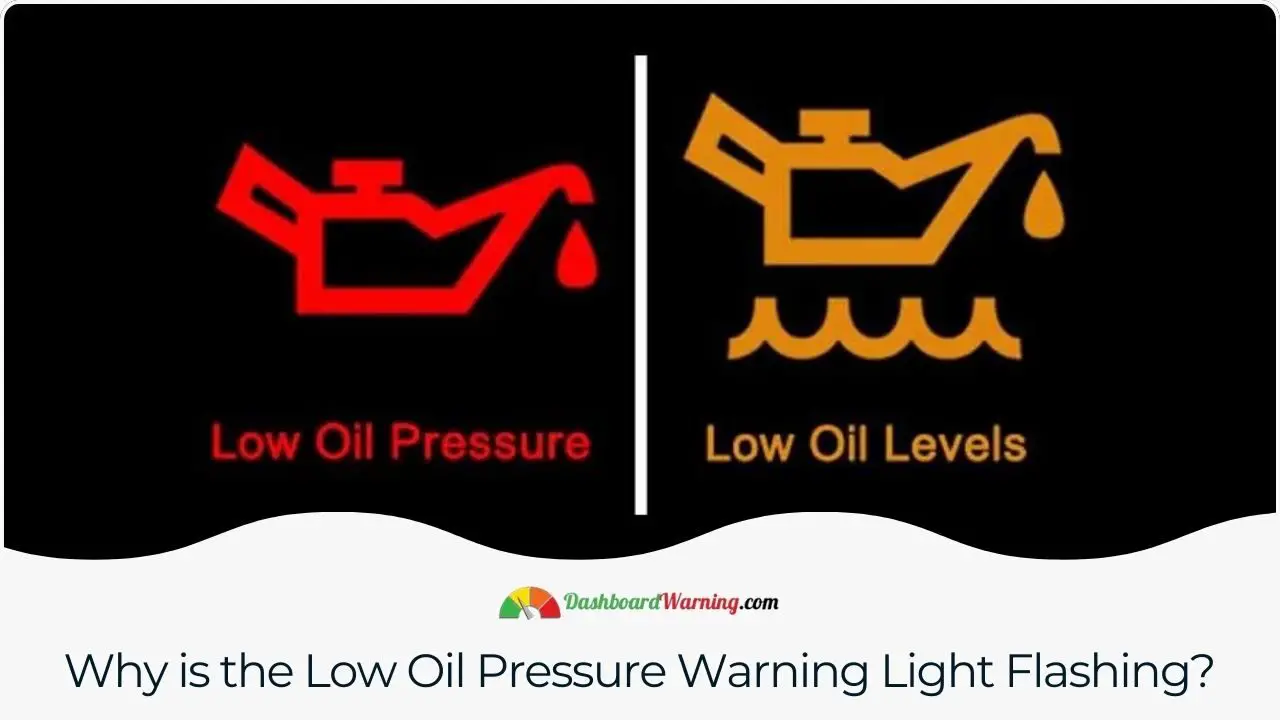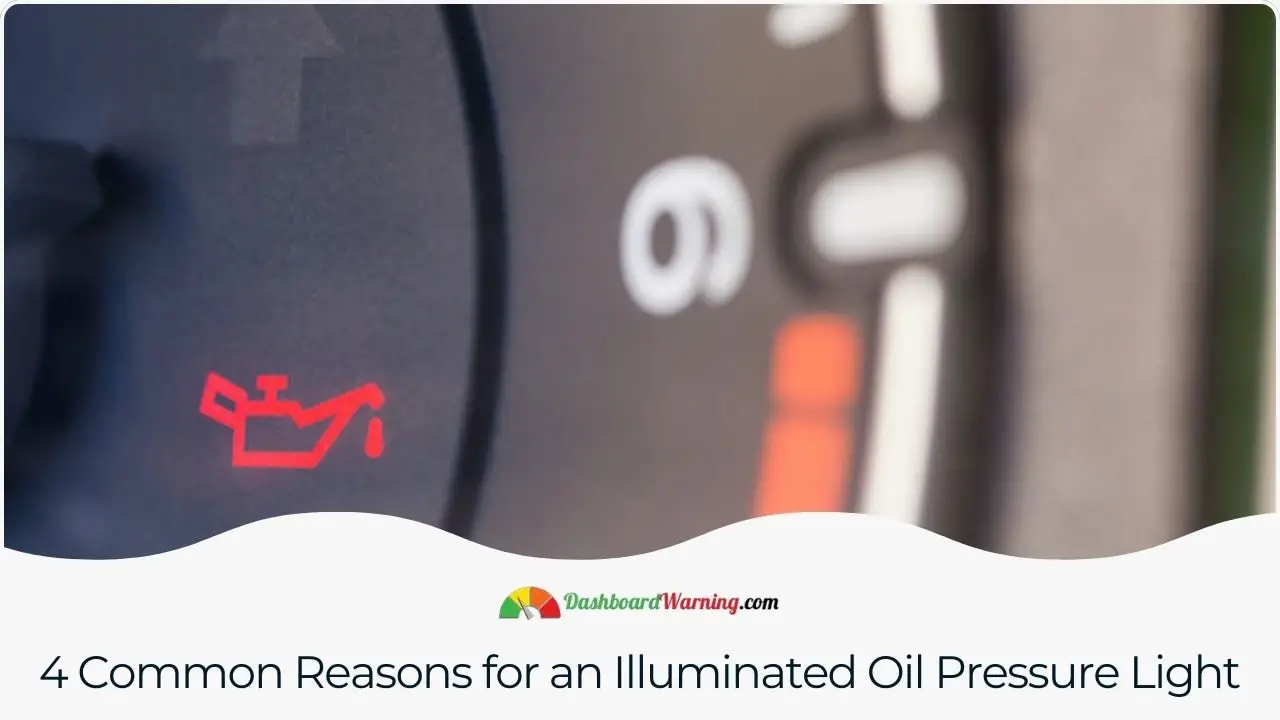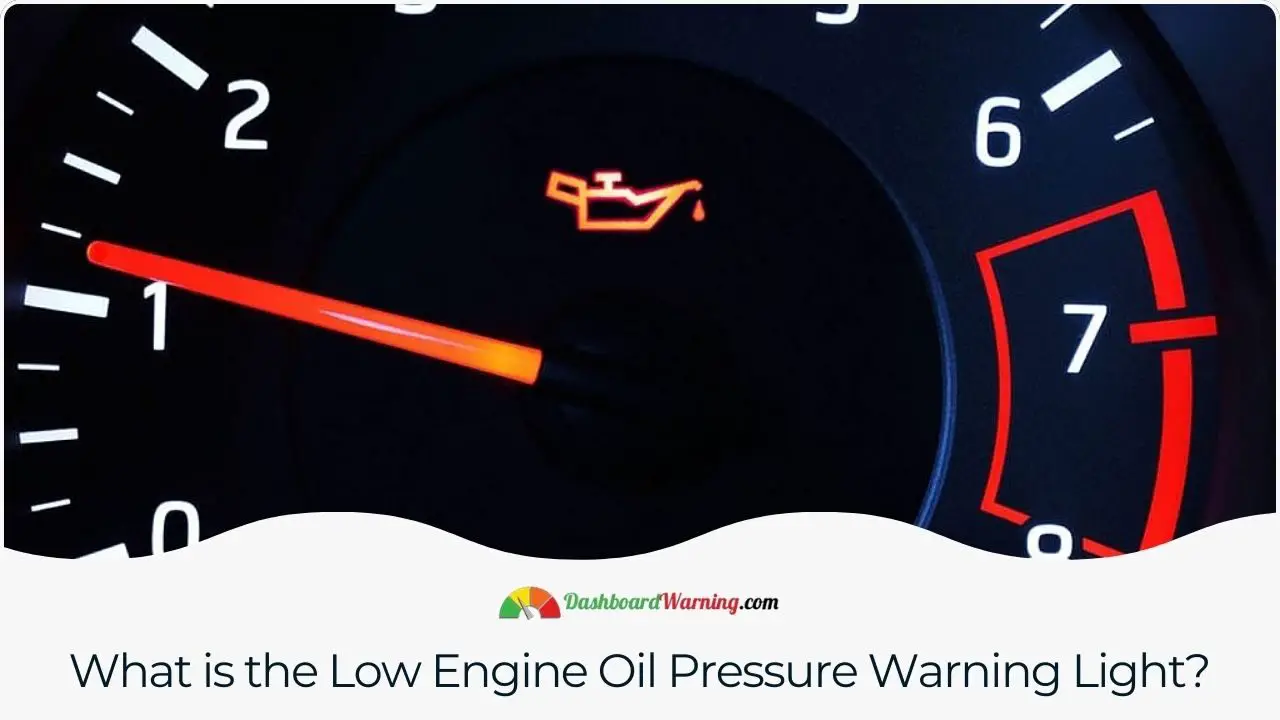The Low Engine Oil Pressure Warning Light on your dashboard serves as a crucial alert from your car's computer, signaling a potential issue with your vehicle. When you see this light, immediately stop driving, switch off the engine, and check the oil level after it cools down.
Various factors can trigger this warning light, including:
- Insufficient or Degraded Oil – Regular maintenance is essential for your vehicle's longevity. Scheduling an oil change every 3-6 months or every 3,000 – 5,000 miles is crucial. This routine ensures that your engine is always supplied with fresh oil.
- Engine Wear – The engine relies on oil moving through components like the crankshaft bearing and camshaft bearings. Wear and tear in these areas can widen them, causing oil to flow too freely, which reduces pressure. The oil pump is designed to push oil through these narrow spaces under the bearings and passageways, creating the necessary pressure. The system's pressure increases with the engine's speed and flow rate.
- Malfunctioning Oil Pressure Gauge – Sometimes, the issue lies not with the oil but with the pressure gauge. Electrical problems or faulty wiring can lead to incorrect readings. A technician must conduct a mechanical oil pressure test to diagnose this accurately.
- Clogged or Damaged Oil Filter – Oil filters are crucial for maintaining oil pressure. A clogged filter can hinder flow and increase pressure. Moreover, a malfunctioning pressure relief valve on the filter can fail to regulate this pressure, affecting oil flow and pressure levels.
- Oil Viscosity – The thickness of the oil, or its viscosity, plays a significant role in oil pressure. Thicker oil, with higher viscosity, flows slower, impacting the pressure, especially during different seasons.
- Engine Overheating – Overheating can severely affect your engine, causing the oil to thin out and lose the ability to build up pressure effectively, much like using oil with a lower viscosity than your vehicle requires.
- Faulty Oil Pump – Although less common, a malfunctioning oil pump can create larger gaps between rotors, leading to a decreased flow rate.
- Worn Out Internal Engine Components – Each part within the engine contributes to its operation. If these components wear out, oil might leak into the combustion chamber, get burnt, and reduce the oil level and pressure. This issue is often noticeable by the blue smoke from the tailpipe.
🚨You may be interested in: Cooling Performance Of The Hybrid Battery Is Low
Why is the Low Oil Pressure Warning Light Flashing?

Observing the low oil pressure light flickering on and off during your drive can be concerning. This flashing typically occurs when the oil pressure falls below 5 – 10 PSI at idle, depending on your vehicle. You might also hear a knocking noise if the pressure drops suddenly. The behavior of the light, whether it stays on or flickers, can vary based on your car's movement or if it's idling.
When the oil light flickers at a stop or idle, it could indicate an issue with the oil sensor or that the pressure is critically low. Ideally, your engine should maintain at least 5 PSI when stationary. If it falls below this, the oil light will flicker. Conversely, the oil levels might be low if the light flickers while driving. You should check and top up the oil as necessary. If replenishing the oil doesn't extinguish the light, worn engine bearings could be the culprit, leading to oil escaping from its designated areas. Prompt inspection and repair by a technician are crucial in this case.
Regular maintenance, including oil changes, is the best preventative against oil pressure issues. Signs like engine knocking, a low oil pressure gauge at idle, or reduced engine performance are warnings of inadequate oil circulation in the engine. Neglecting these signs can lead to severe engine damage. It's advisable to seek a professional inspection without delay to avoid catastrophic engine failure.
4 Common Reasons for an Illuminated Oil Pressure Light

- Low Oil Level: Check your oil level by locating and using the dipstick under the hood (refer to your owner’s manual if needed). Clean the dipstick, reinsert it, and then check the level. If it's low, add oil and see if the light turns off. Also, look for any oil leaks to prevent future occurrences.
- Dirty Oil: Over time, oil accumulates dirt and debris. Excessively dirty oil can lead to low pressure. Check the oil’s condition on the dipstick—it should be a clear amber color and fluid. An oil change might resolve the issue if it's sludgy or dark.
- Faulty Oil Pump: If the oil is adequate and in good condition, but the light remains on with unusual engine noises or overheating, the problem may lie with a malfunctioning oil pump. Avoid driving until this issue is rectified.
- Worn-Out Oil Pressure Sensor: With a normal oil level and condition and the engine running smoothly, a persistent oil light could point to a defective oil pressure sensor. While not immediately hazardous, it's important to have your car checked and the sensor replaced by a qualified mechanic soon.
What should I do when the low oil pressure warning light comes on?
When your car's engine oil light illuminates while driving, it's crucial to pull over and switch off the engine safely. First, inspect the oil level and condition and check for any indications of oil leakage. Driving to the nearest auto repair shop for a detailed examination is generally safe if these aspects appear normal.
However, suppose you discover the oil is low or dirty or experience unusual engine noises or overheating. In that case, calling for a tow truck immediately is wise. Opting for a tow is a far more economical choice than facing the potential costs of extensive engine damage repairs.
FAQs About Low Engine Oil Pressure Warning Light
Can you drive a car with low oil pressure?
No, You must not drive a vehicle with a low oil pressure warning light on. It's important to stop the car and turn off the engine as soon as it's safe.
What would cause the oil pressure warning light to come on?
The oil pressure warning light can come on for several reasons, including low oil level, dirty oil, a faulty oil pump, a worn-out oil pressure sensor, or engine wear.
Will adding oil fix low oil pressure?
Adding oil might fix low oil pressure if the issue is simply due to low oil levels. However, suppose factors like a faulty pump or engine wear cause the low pressure. In that case, merely adding oil will not resolve the problem.
Was this page helpful?


More important content about Tips and Advice
Porsche Cayenne Years To Avoid
Subaru Legacy Years To Avoid - 5 Worst Years
Pt Cruiser Years To Avoid
Use 5w30 instead of 0w20 - Advantages and Disadvantages
Tractor Dashboard Symbols And Meanings
Tips and Advice
Subaru Legacy Years To Avoid - 5 Worst Years
Pt Cruiser Years To Avoid
Use 5w30 instead of 0w20 - Advantages and Disadvantages
Tractor Dashboard Symbols And Meanings
Suzuki Sx4 Years To Avoid - 5 Worst Years
Cummins ISX Years To Avoid and Why